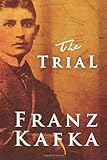The Bauer-Ginsberg Commission -- charged by President Obama to shorten voting wait times -- is traveling the country listening to experts and the public. I attended the first meeting in June and I had barely sat down when Chairman Bauer announced that the committee would not make recommendations for federal legislation; instead, they will report on "best practices." That decision is unfortunate though understandable, given Congress's inability to pass anything without a "cliff-like" deadline (e.g., government funding, tax cut expiration, debt ceiling, student loans).
While the committee should recommend best practices for registration and voting, I fear those exhortations will fall on the deaf ears of Republican state legislatures. (I highly recommend those two white papers, authored by Profs Ansolabehere and Stewart -- 2/3rd of my undergraduate thesis committee. The only point I would add is that all polling places should be required to have backup paper ballots on hand in case something goes drastically wrong.)
Thus, I recommend an approach that leverages the good will of civil servants and the tenacity of mission-driven organizations. Bauer-Ginsburg should delve into the election administration data and produce a calculator that would tell county bureaus of election how many voting machines and poll workers they will need to avoid being the next Florida or Virginia. National exposure and use of such a calculator would shorten lines everywhere, without the need for new legislation. Further, watchdog organizations such as Election Protection could run the calculations for all 3,000 counties and pressure election officials to add resources in under-served areas. Finally, if local bureaucrats were still recalcitrant in allocating the resources necessary for a smooth Election Day, at least campaigns could know where trouble spots might arise, and be better prepared to assist voters.
In the spirit of the new fad of pretotyping, I've mocked up the following calculator based on very rough data -- try it yourself (below the fold)!
One of the key features of the calculator is that it can factor in a change to state voting laws (such as North Carolina's) that would increase the demand for voting on Election Day proper. The following items affect my (admittedly somewhat crude) calculations:
- Percent of voters who cast ballots early or absentee, by state.
- The average length of time needed to complete a ballot on various machine types. (Highly recommend skimming this paper -- thank you New York City BoE!)
- Length of ballots, roughly estimated by state based on the number of initiatives (cached version) that usually appear on the ballot.
- Whether the state has same-day registration.
- How long the polls are open in each state.
- How many more people, on average, arrive at peak times vs. average times.
If I were to extend this calculator, I would include the number of eligible adults in the precinct as well how urban the precinct is (as a proxy for transience). High transience in a precinct leads to many voters needing to re-register, and can slow the process down considerably.








